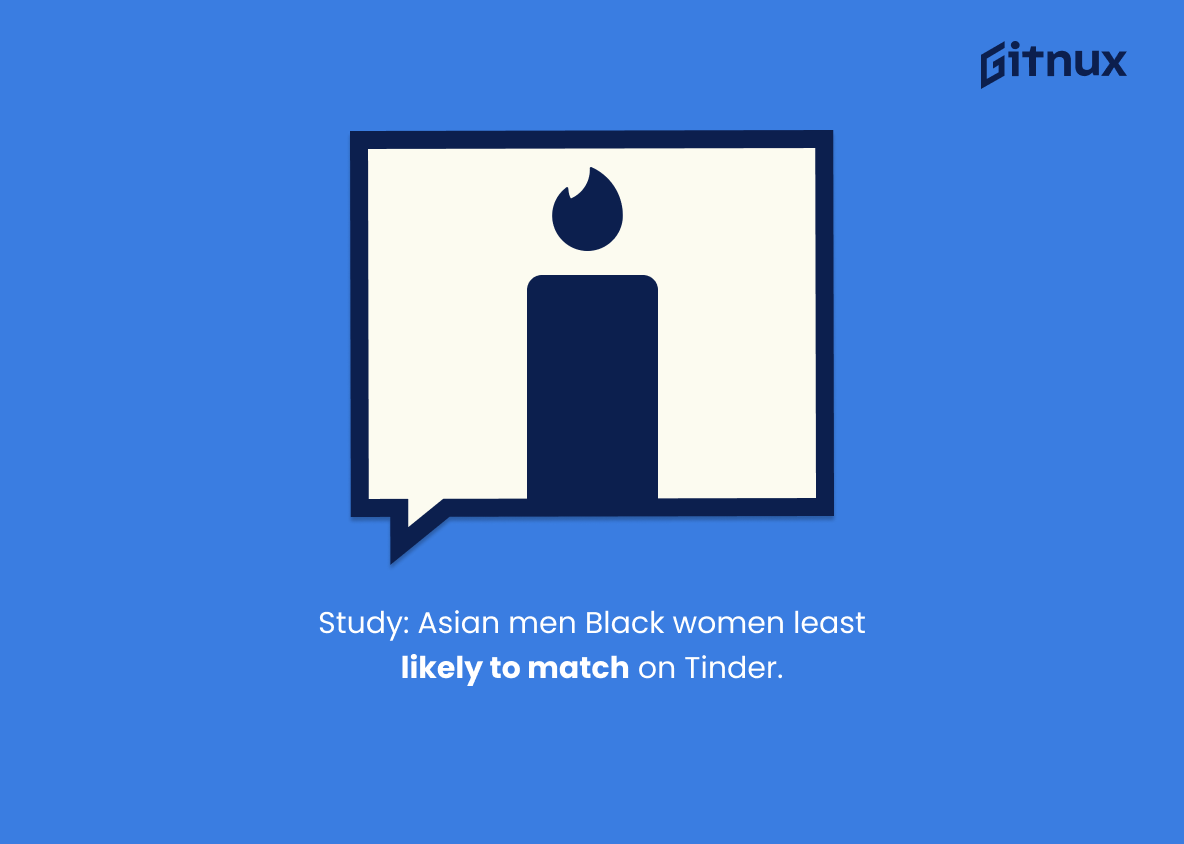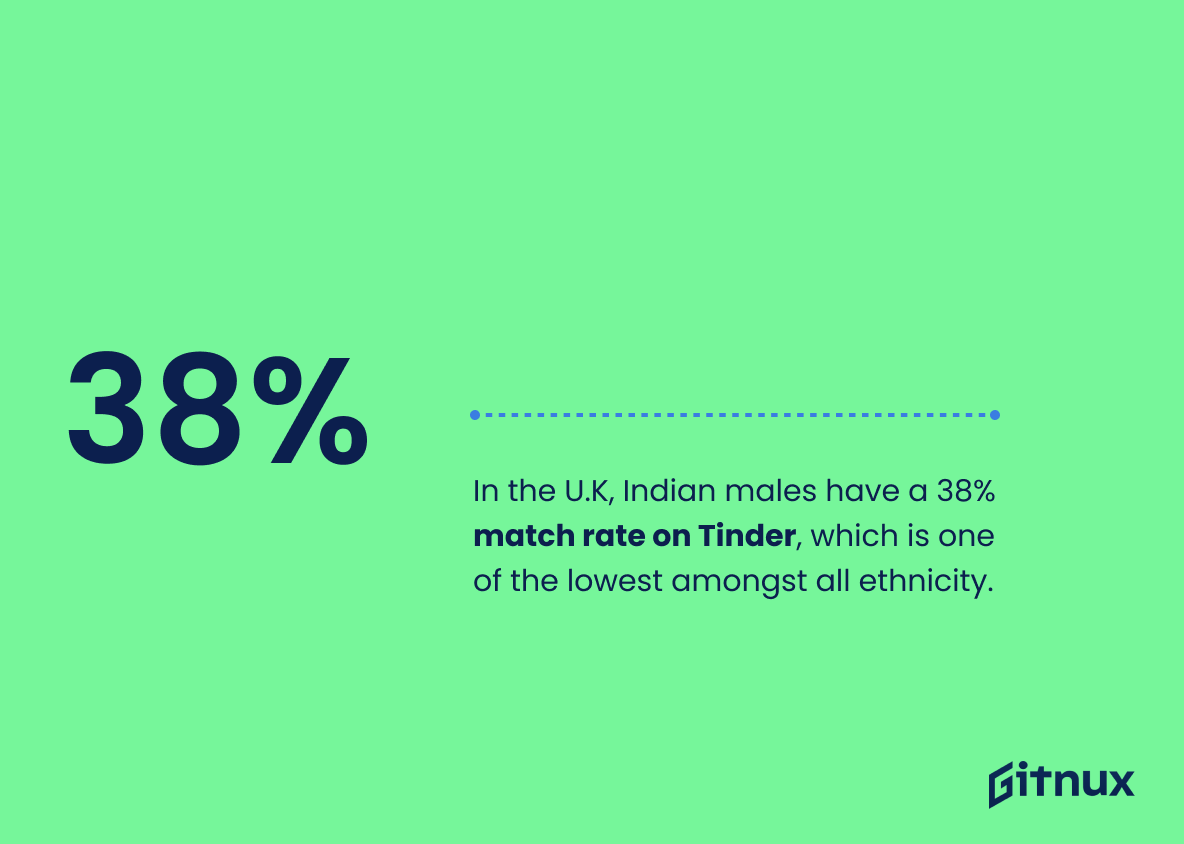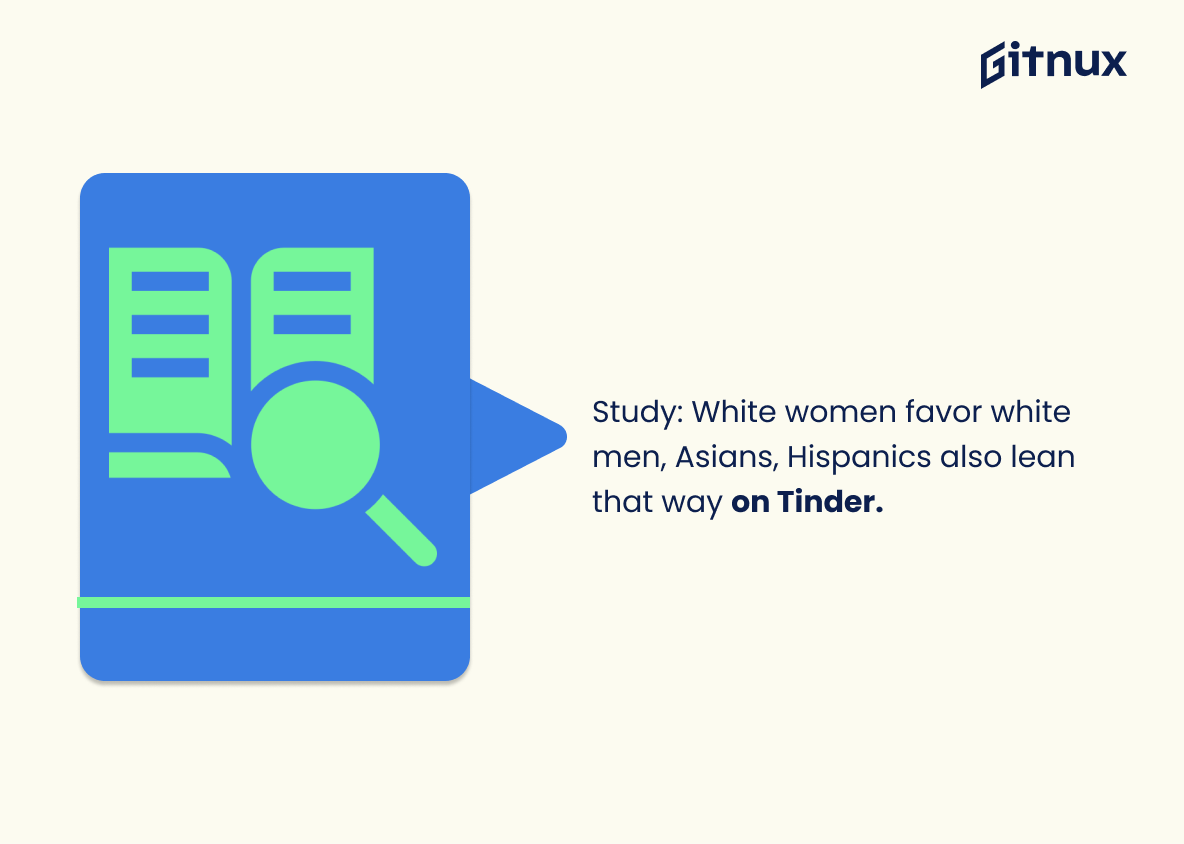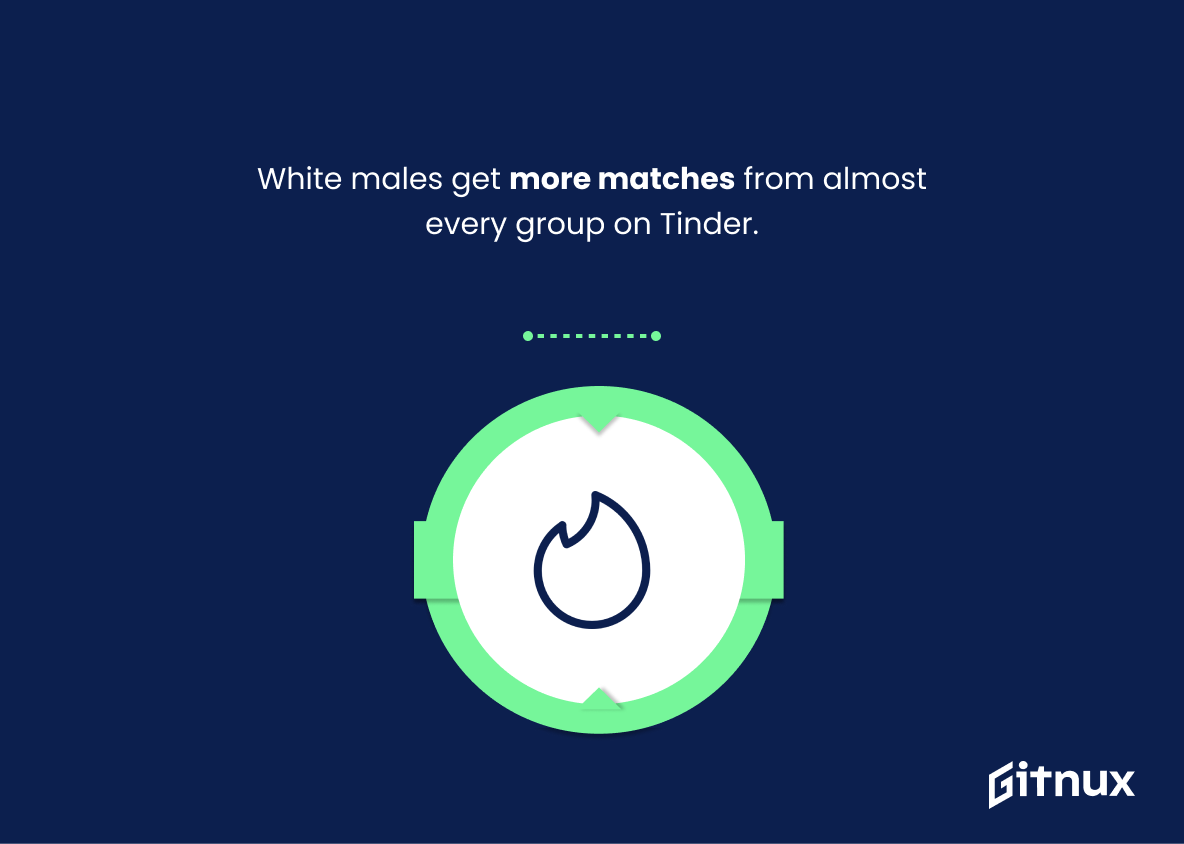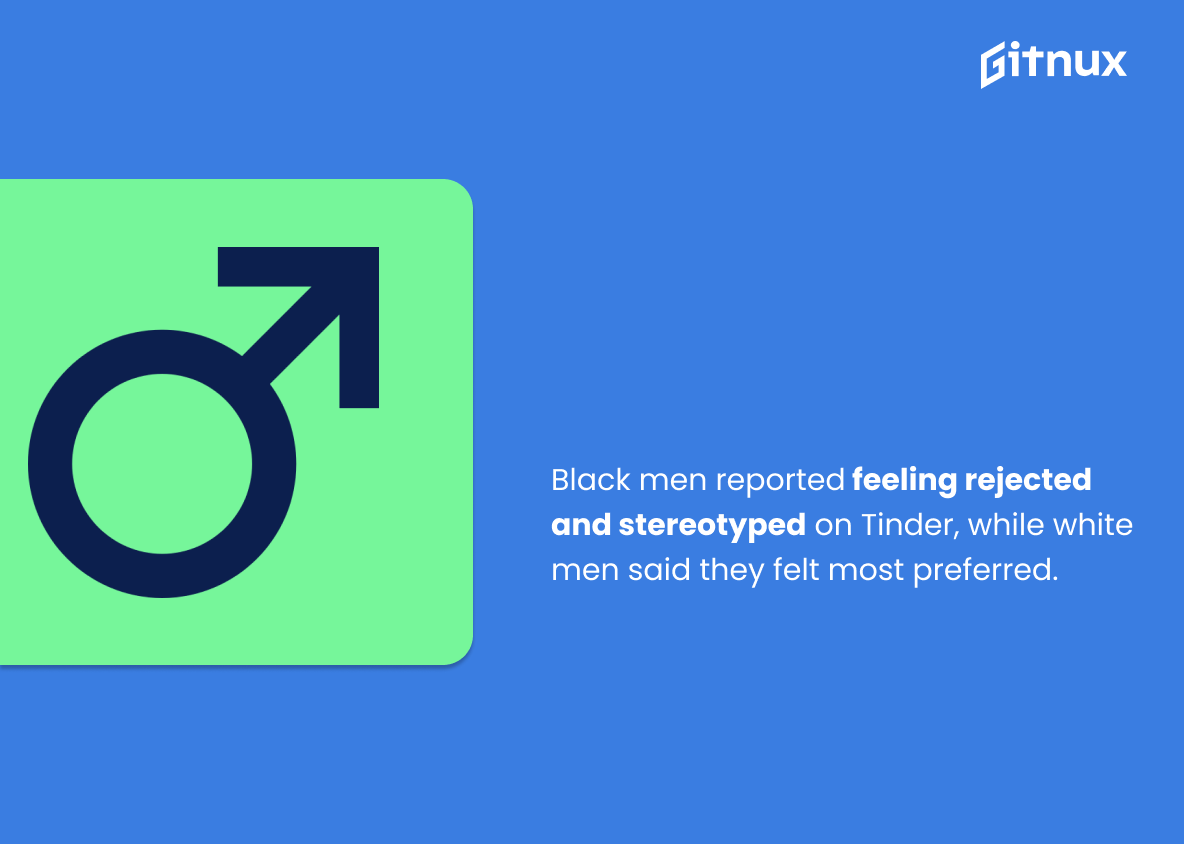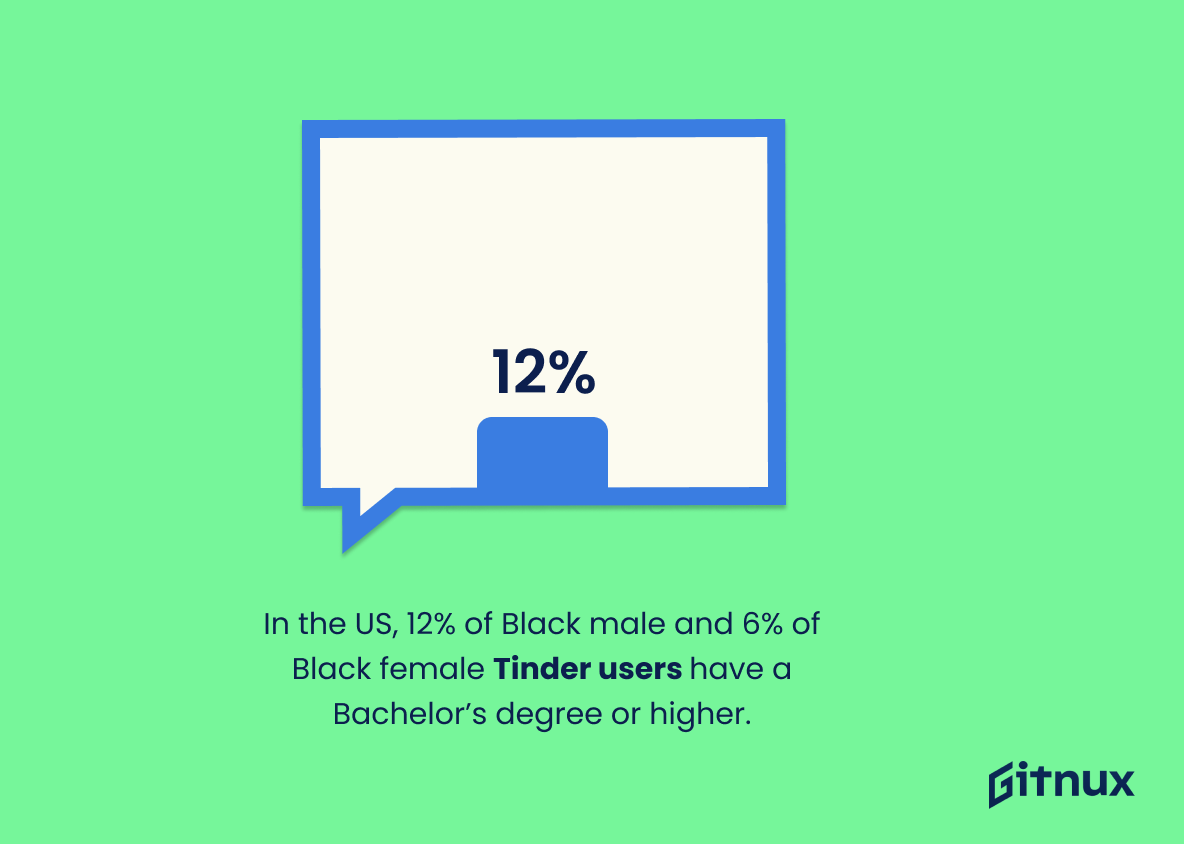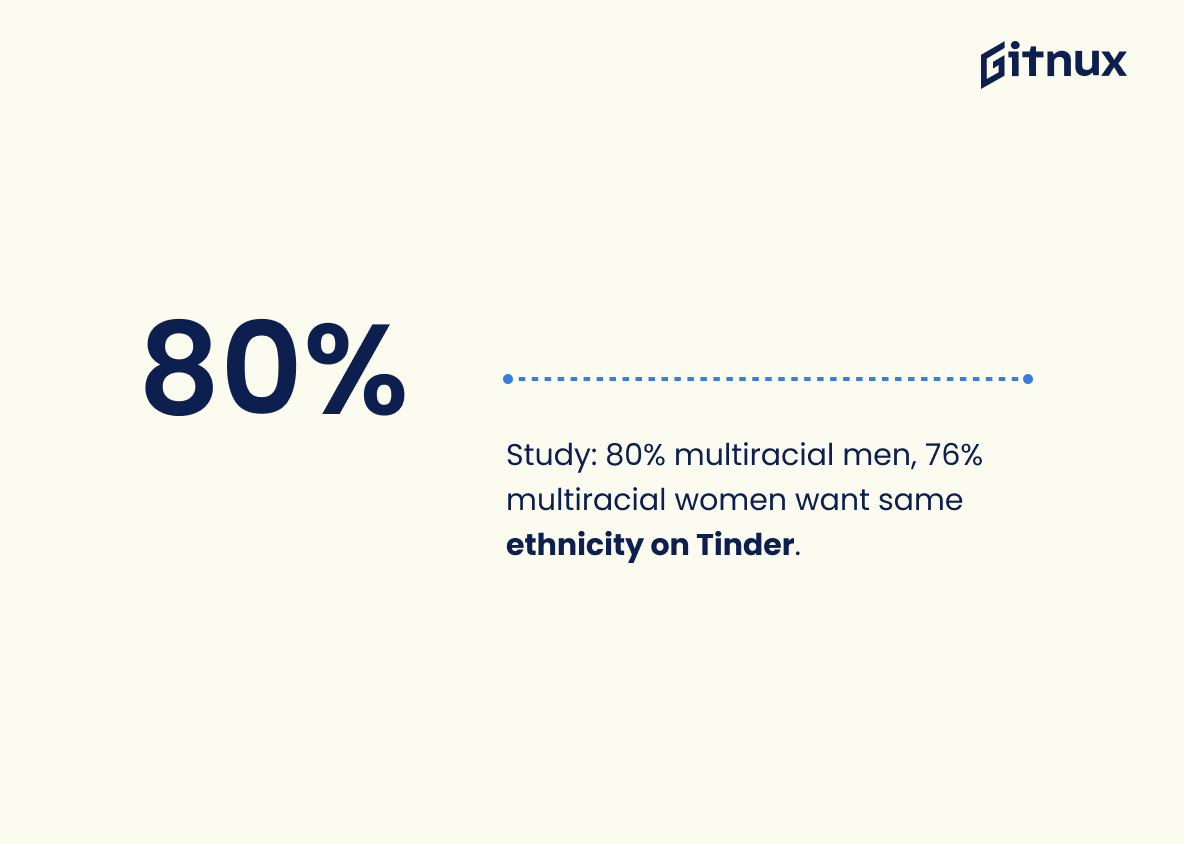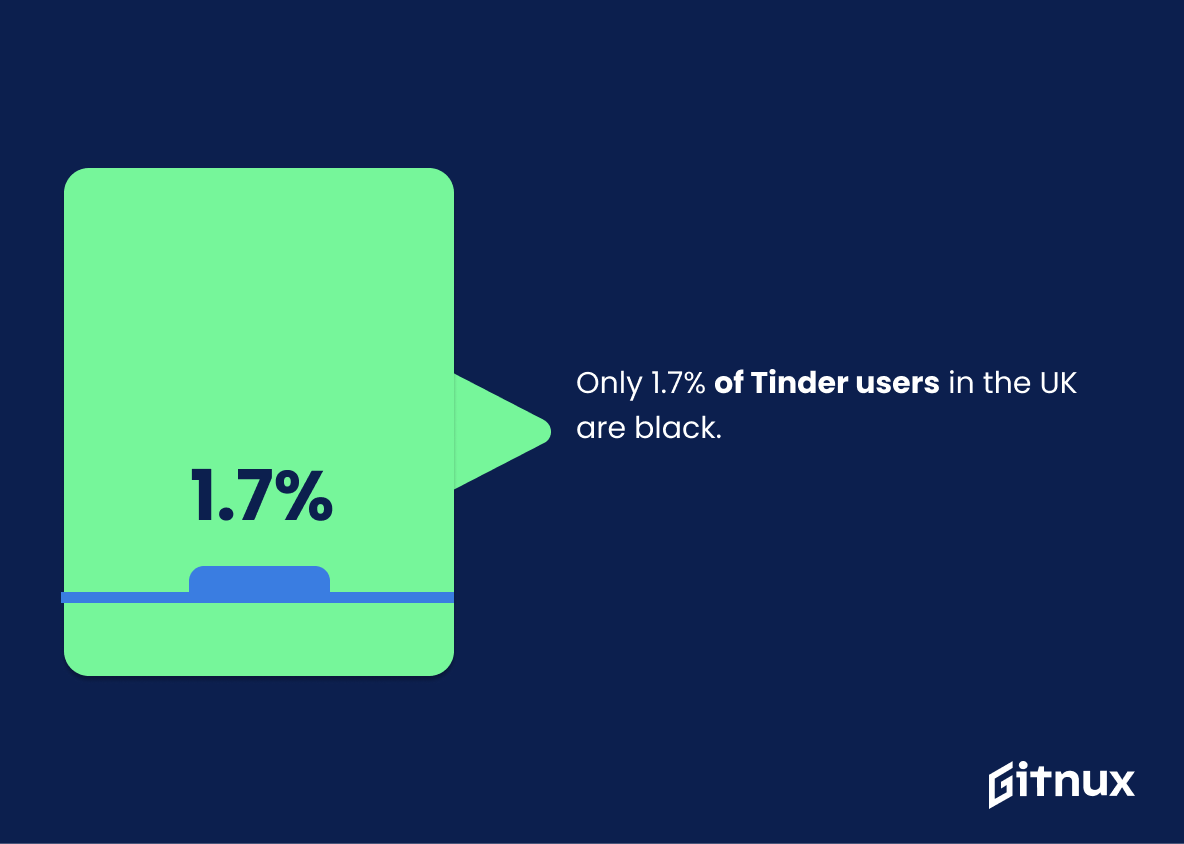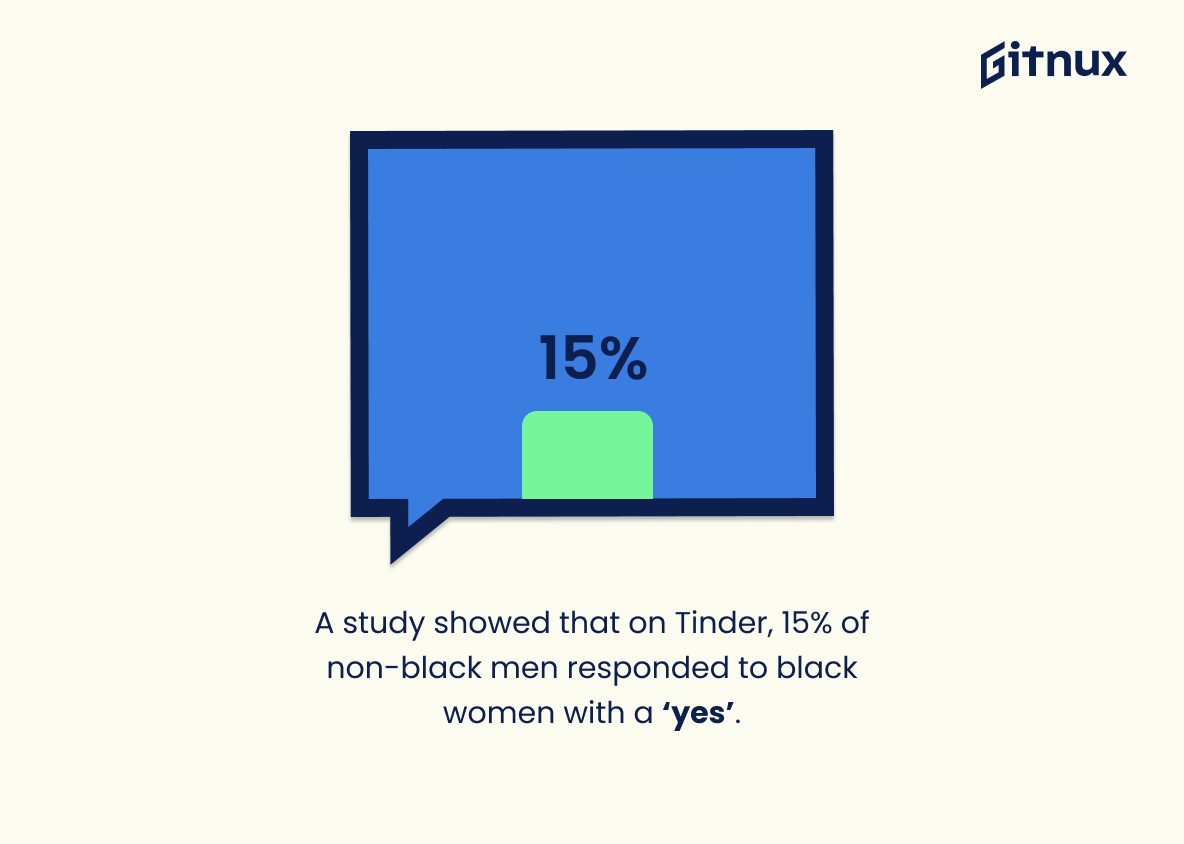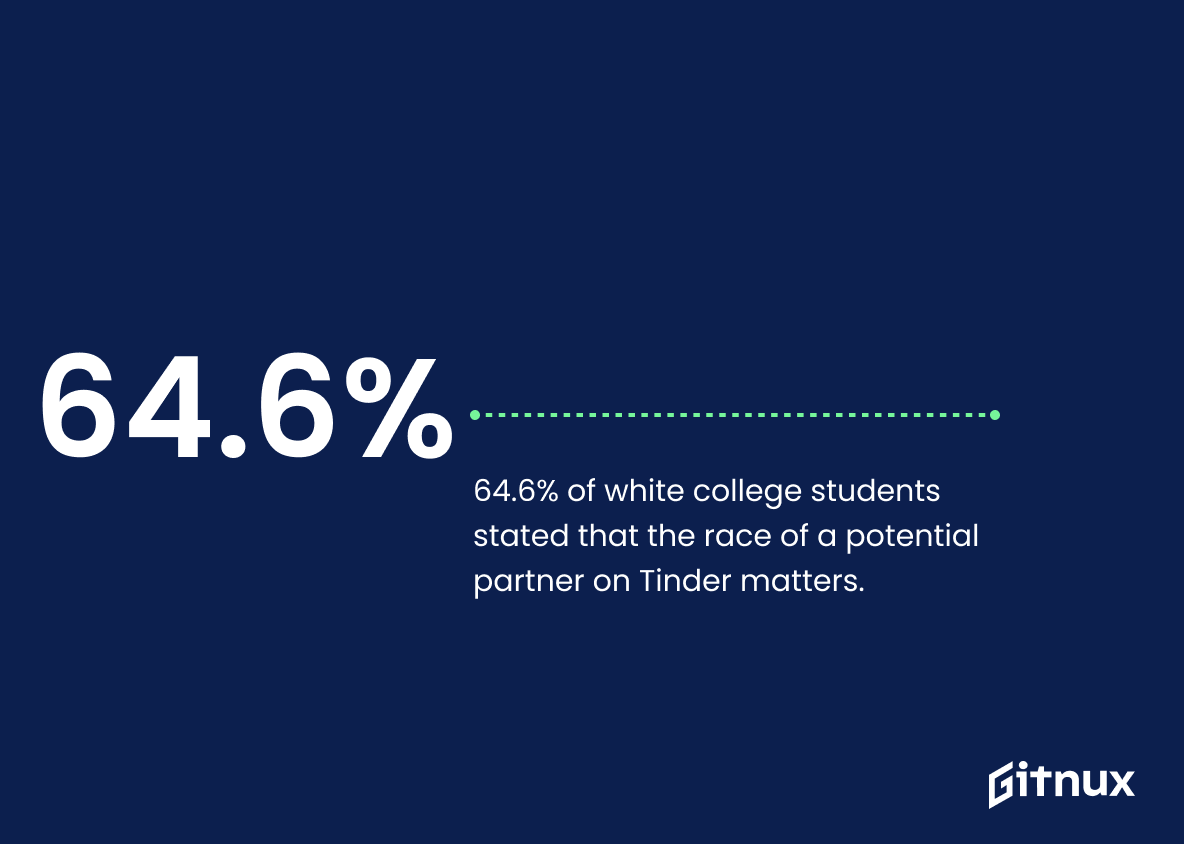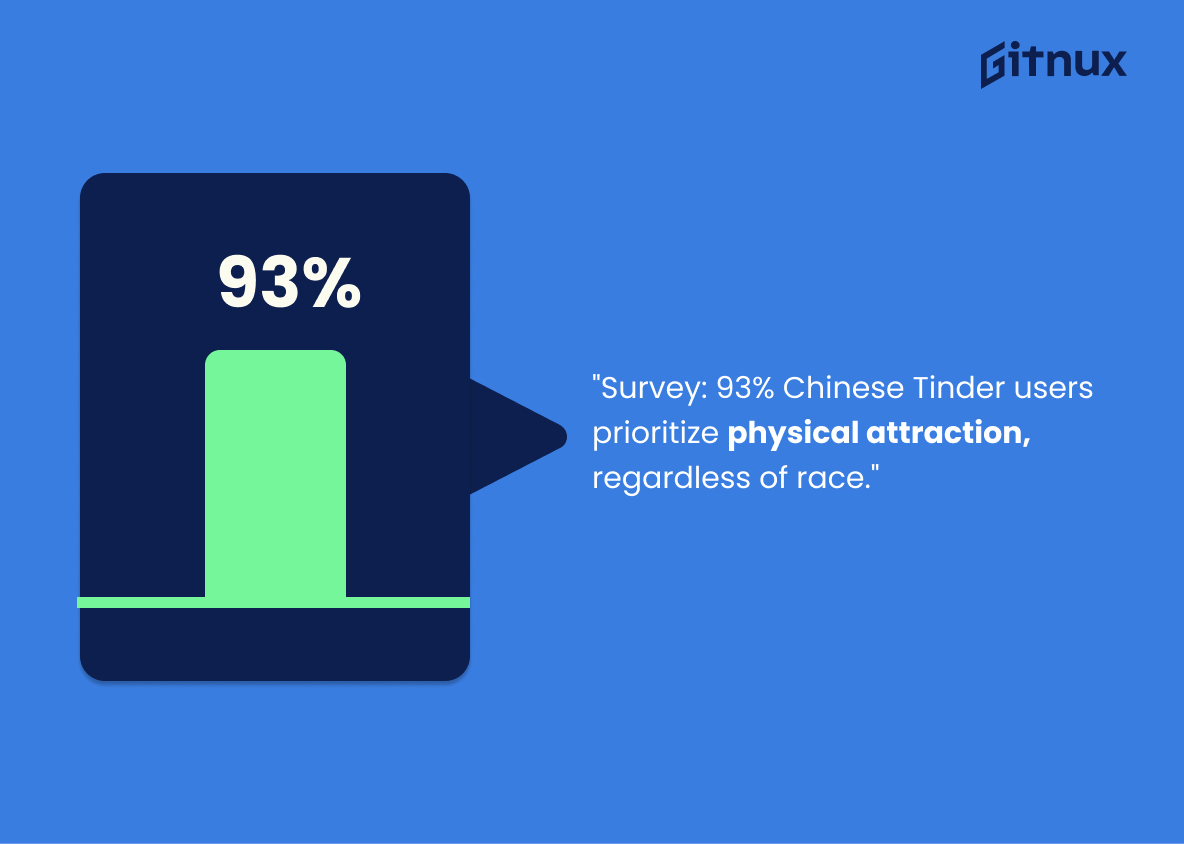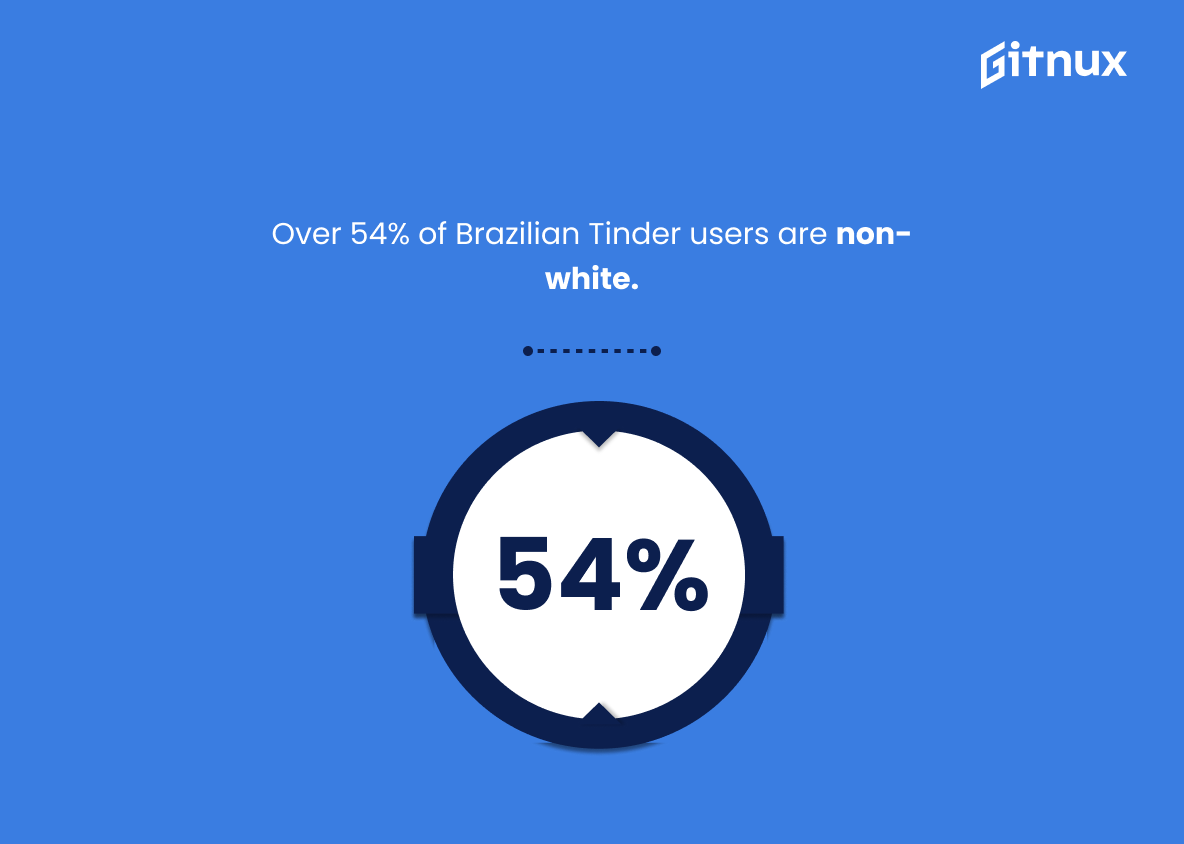Navigating the vast and intriguing universe of online dating can seem challenging. Among the stars in this digital galaxy is Tinder, a mobile dating application that has revolutionized the realm of romantic connections. This blog post delves into the world of Tinder ethnicity statistics — a crucial aspect that offers fascinating insights into global dating patterns. As we unravel these statistics, we will explore the nuances of multi-cultural dating elements, discovering how ethnicity influences user experiences, swiping habits, and match probabilities on the most popular dating platform. Get ready to immerse yourself in this engaging exploration of digital dating as seen through a multi-ethnic lens.
The Latest Tinder Ethnicity Statistics Unveiled
77% of Tinder users are white, 8% are Hispanic, 9% are Black, and 5% are Asian.
In slicing through the romantic ebbs and flows of Tinder’s diverse user base, the statistic shines a luminous spotlight on the variegated layers of the digital dating world. Enveloping the vast majority at 77%, white users are conspicuous in their dominance, setting an interesting backdrop for sociocultural interactions. Intriguingly, peering through the lens of ethnic diversity, Hispanic users contribute a mere 8% and Black users just a notch higher at 9%, prompting contemplation of underlying demographic trends on Tinder’s platform. Notably, Asian users form the smallest share of the dating pie at 5%, which could lead to poignant discussions about access, preferences, and representation. This exploration of ethnicity statistics on Tinder paints a vivid spectrum of its user community, evoking insightful conversation and potential manifestations in the dynamics of online dating.
According to a study, Asian men and African American women are the least likely to get a match on Tinder.
Scrutinizing such statistical outcomes can serve as an eye-opener in the jet stream of modern digital dating, particularly drawing attention to the intersectionality of race and digital dating dynamics. In decoding this statistic, the blog post will underscore an inherent yet often overlooked facet of Tinder interactions – the role of racial preferences. Entwining this discourse within the Tinder Ethnicity Statistics narrative, it’s key to address any potential implications such biases might have, not just within the ambit of virtual dating, but trickling down to the society at large. Thus, mention of this finding pivots the discussion to an uncharted but crucial aspect tied to social stereotyping in the realm of online dating.
In the U.K, Indian males have a 38% match rate on Tinder, which is one of the lowest amongst all ethnicity.
This riveting statistic underscores the intriguing labyrinth of ethnic disparities on Tinder, particularly spotlighting the plight of Indian males in the U.K. It’s an alarming indicator of a possible bias in dating preferences, revealing the harsh reality of digital dating that intertwines race, attraction, and rejection. As a stark outlier with one of the lowest match rates, it provokes a dubious curiosity, making it a critical pivot in our study on Tinder ethnicity trends. The statistic prompts further investigation into the ethnic characteristics on digital platforms, elucidating societal patterns of attraction and romantic choices influenced by ethnicity. This finding will indisputably add a new depth and perspective to our discussion on Tinder ethnicity statistics.
In a study, it was found that White women prefer white men to the exclusion of everyone else — and Asian and Hispanic women prefer them even more exclusively on Tinder.
Embedding this statistic within Tinder Ethnicity Statistics post unravels intriguing insights into the complex tapestry of racial preferences in online dating. This discovery spotlights not just the pre-existing societal biases, but also posits White men at the epicenter of this preference matrix. This not only carves out the gravity of race in shaping romantic endeavors on platforms like Tinder but also underlines the degree of exclusivity these preferences can reach. Hence, the statistic brings context, depth, and nuance to our understanding of inter-ethnic romantic preferences in the digital dating landscape.
White males get more matches from almost every group on Tinder.
The revelation that white males receive more matches from multiple groups on Tinder adds a layer of complexity to the discussion about Tinder Ethnicity Statistics. It nudges the discourse beyond simple usage metrics to delve deeper into the overarching issues of racial preference, bias, and the influence of societal beauty standards. By shedding light on this fact, the conversation isn’t just limited to Tinder, but broadens to question the role of race in online dating, paralleling larger societal issues and consequently, illustrates the dynamic interaction between technology and cultural norms. Understanding such patterns enriches our perspective and provides a baseline for further investigations into the fundamental reasons and the potential biases embedded in dating apps.
Black men reported feeling rejected and stereotyped on Tinder, while white men said they felt most preferred.
In the realm of digital dating, the mention of distinctive experiences based on ethnicity such as “Black men reported feeling rejected and stereotyped on Tinder, while white men said they felt most preferred” leaves an indelible mark on our understanding of how racial biases can permeate even into the world of online romance. This compelling statistic calls upon the readers to recognize the underlying racial disparities that could be influencing their experiences and interactions on the platform. It also offers a window into the unique challenges faced by different ethnic groups within the Tinder populace, illuminating a significant layer of complexity in Tinder’s ethnicity statistics. Essentially, it delves into the intricate tapestry of human interactions in a virtual sphere narrating the story of unequal experiences and preferences informed by race.
In the US, 12% of Black male and 6% of Black female Tinder users have a Bachelor’s degree or higher.
Interpreting this statistic within the realm of Tinder ethnicity analytics illuminates an intriguing trend in regards to educational attainment of Black users. It offers a telling insight by revealing a discernible gender divide among the African-American community on Tinder, seemingly skewed towards male users when it comes to higher education. Delving into these numbers, it showcases a differential rate of advanced education between Black males and females, with males showing a significant lead. This contrast not only offers a perspective on the existing educational disparities within the community, but also indicates a potential influence on their matchmaking preferences and strategies on the platform. Essentially, it adds a layer of nuance to our understanding of the dynamics of ethnic representation, intersectionality and demographic patterns in online dating.
In a study, 80% of multiracial men and 76% of multiracial women stated a preference to date someone of their own ethnic background on Tinder.
This eye-opening statistic is like the lifeblood pulsing through a conversation about ethnicity preferences on Tinder. By illuminating how a significant number of multiracial men and women—80% and 76% respectively—show a preference for dating within their own ethnicity, it adds a captivative depth and unparalleled nuance to the debate. It facilitates a deep dive into the motivations and psychological undertones of dating patterns on this global platform, ultimately enriching the discourse on Tinder’s ethnicity statistics. Its candid revelation empowers readers to more empathetically understand the intricacies of dating in a multi-faceted racial world, and forms an essential cornerstone to comprehend the modern multicultural matrix dynamics within dating apps.
Only 1.7% of Tinder users in the UK are black.
Tinder, the popular dating app, has become a critical social barometer in our digitally connected age. Relating the data point concerning the mere 1.7% representation of black users to app’s UK population offers intriguing insights into Tinder Ethnicity Statistics . It invites deeper probing into the ethnicity diversities and social inclinations on the platform. This percentage can potentially highlight anticipated and unanticipated biases, influencing app’s strategic focus, inclusivity measures, and cultural reflections. It’s a numerical representation of a fuller narrative that begs to be understood and addressed appropriately in the quest for more harmonious digital, social intersections.
Over 54% of Brazilian Tinder users are non-white.
Diving into the colorful canvas of Tinder Ethnicity Statistics, this data point stands out, boldly underlining the vast diversity on this dating platform, particularly in Brazil. The statistic that over 54% of Brazilian Tinder users identify as non-white paints a vivid picture of racial representation on the app. It serves to highlight a surge in global multiculturalism within digital dating spaces, offering a more nuanced, complex, understanding of how ethnicity shapes interaction patterns on Tinder in Brazil. Without doubt, it challenges the conventional image of Tinder as a predominantly white landscape, pushing us to re-examine our perspectives on ethnicity and online dating, while also providing potential pointers for marketers and app developers about their user base.
48% of Tinder users in India are from ethnic minorities.
Diving into the heart of the Tinder Ethnicity Statistics, the revelation that 48% of Tinder users in India are from ethnic minorities provides a profound understanding of societal shifts and evolving digital norms. This fact is significant, shedding light on the platforms’ inclusivity and dimensional reach, revealing that it’s not just the mainstream population that engages but also an impressive number from diverse ethnic backgrounds. This figure exemplifies the breaking down of cultural barriers and illuminates the pronounced tapestry of Indian culture reflected in digital dating.
A study showed that on Tinder, 15% of non-black men responded to black women with a ‘yes’.
This intriguing statistic sheds a light on the complex dynamics at play within the world of online dating vis-à-vis ethnicity on Tinder. It reinforces the potential role racial biases may play in decision-making when swiping ‘yes’. The fact that a segment as significant as 15% of non-black men responded positively to profiles of black women discloses underlying trends towards ethnic diversification in dating preferences, or conversely highlights possible bias limitations. Through such insights, we can start to untangle how racial perceptions influence the path of digital age romance, stimulating more inclusive conversations around dating app behavior.
64.6% of white college students stated that the race of a potential partner on Tinder matters.
In the realm of online dating depicted in a Tinder-focused blog post, understanding the underlying dynamics of ethnicity preference becomes imperative. The claimed figure of 64.6% of white college students who go by the factor of race while selecting potential partners on Tinder is noteworthy in several ways. Firstly, it reveals the silent, yet profound role that ethnicity may be playing in shaping romantic connections in the digital arena. It conjures the question of whether modern dating scenarios are increasingly becoming a showcase of embedded racial preferences or inclinations. Second, it poses a direct challenge to the notion of online platforms being non-discriminatory spaces, steering the debate towards the subject of unconscious bias. Third, it necessitates closer scrutiny of the factors influencing dating decisions among the young demographic, particularly in the context of an increasingly multiracial society. By reflecting these findings in our blog post, we grasp the potential impact of ethnic dating patterns and its relevance on Tinder, lighting the way for a more comprehensive understanding of race-based dynamics in virtual matchmaking.
In a survey, 93% Tinder users in China, both male and female, ranked physical attraction as one of their top concerns, irrespective of race.
Drawing on this intriguing statistic, it becomes apparent that, for Tinder users in China, the magnetism of physical attraction holds a profound significance, regardless of the individual’s ethnicity. An overwhelming 93% of users prioritize outward appeal, which resonates an evident pattern highlighting how visual attraction dominates the sphere of digital dating in this region. This provides a fascinating angle for our blog post on Tinder Ethnicity Statistics, shedding light on users’ preferences and behavioral trends in forging connections, and steering the narrative towards a dynamic exploration of physical allure transcending ethnic boundaries.
Conclusion
In sum, the world of online dating is as diverse and complex as our society. Tinder’s ethnicity statistics reveal an intricate web of preferences, trends, and potential biases that reflect broader cultural perspectives. While some data can be discouraging, there’s also an undeniable indication of progress and growing acceptance. Nevertheless, it is essential to remember that every swipe and match on Tinder is driven by a real, unique individual with their own set of preferences and experiences. As we continue to embrace the digital age of love, understanding such statistics becomes ever more crucial in ensuring that online dating platforms remain inclusive, respectful, and open to all.
References
0. – https://www.www.businessofapps.com
1. – https://www.qz.com
2. – https://www.www.vox.com
3. – https://www.www.zoekeendate.nl
4. – https://www.www.businessinsider.com
5. – https://www.www.whatsonweibo.com
6. – https://www.metro.co.uk
7. – https://www.morningconsult.com
8. – https://www.techcrunch.com
9. – https://www.www.statista.com
10. – https://www.apracticalwedding.com
11. – https://www.theblog.okcupid.com
12. – https://www.www.ingentaconnect.com

